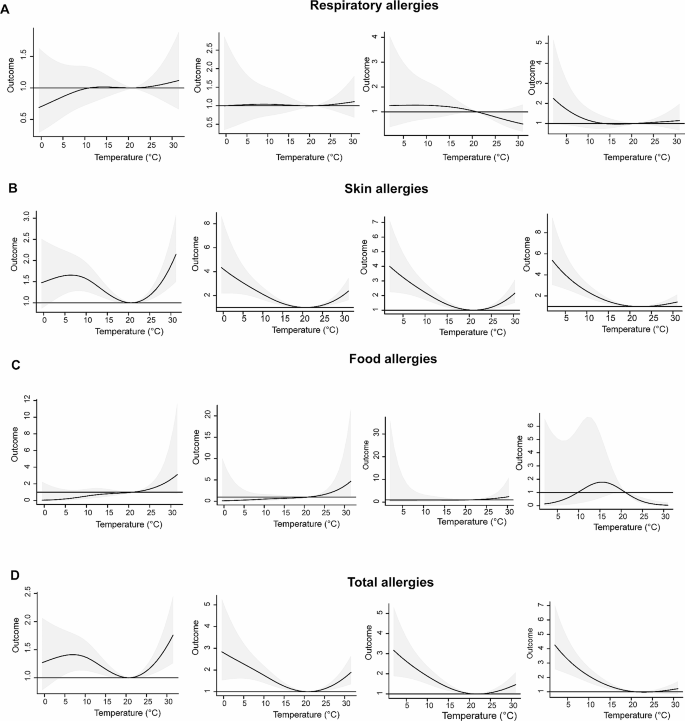Abstract
Background
The effects of temperature and relative humidity on different types of children’s allergic diseases have not been comprehensively evaluated so far. This study aims to assess the impact of temperature and relative humidity variability on children’s allergic diseases and to identify the critical time window.
Methods
We collected outpatient data on allergen testing in children between July 2020 and January 2022 from the Affiliated Children’s Hospital of Nanjing Medical University. We defined the 1st, 10th, 90th, and 99th percentiles as extreme cold, moderate cold, moderate hot, and extreme hot for temperature, and as low, moderate high, and extreme high for relative humidity, respectively.
A distributed lag nonlinear model (DLNM) combined with a binomial regression model was used to assess the possible nonlinear relationship at different periods. Subgroup analysis by gender and age was conducted.Results
We found that extreme and moderate cold temperatures were positively associated with skin allergies and total allergies (28 days: OR = 4.69, 95% CI: 2.88, 7.63; OR = 3.36, 95% CI: 2.39, 4.73) and (28 days: OR = 3.76, CI: 2.43, 5.81; OR = 2.71, 95% CI: 2.00, 3.68), respectively. Moderate and extreme hot temperatures were negatively associated with food allergies (28 days: OR = 0.13, 95% CI: 0.04, 0.41 and OR = 0.04; 95% CI: 0.01, 0.27). Low relative humidity was negatively associated with respiratory allergies, skin allergies, and total allergic diseases (28 days: OR = 0.26, 95% CI: 0.10, 0.71; OR = 0.29, 95% CI: 0.15, 0.55; and OR = 0.42, 95% CI: 0.26, 0.68). Meanwhile, extreme high relative humidity was negatively associated with respiratory allergies, and positively associated with skin allergies, food allergies, and total allergies (28 days: OR = 0.16, 95%CI: 0.07, 0.37; OR = 3.60, 95% CI: 2.52, 5.14; OR = 15.61, 95% CI: 3.23, 75.56; and OR = 2.33, 95% CI: 1.73, 3.15). A stronger relationship between temperature, relative humidity, and allergic diseases was observed in children under 5 years, specifically girls.Conclusions
Our study provides evidence that temperature and relative humidity variability may be associated with allergic diseases, however, the directionality of the relationship differs by allergic type.


No comments:
Post a Comment